Opinion & Analysis
An in-depth talk: Golf course architect Brandon Johnson
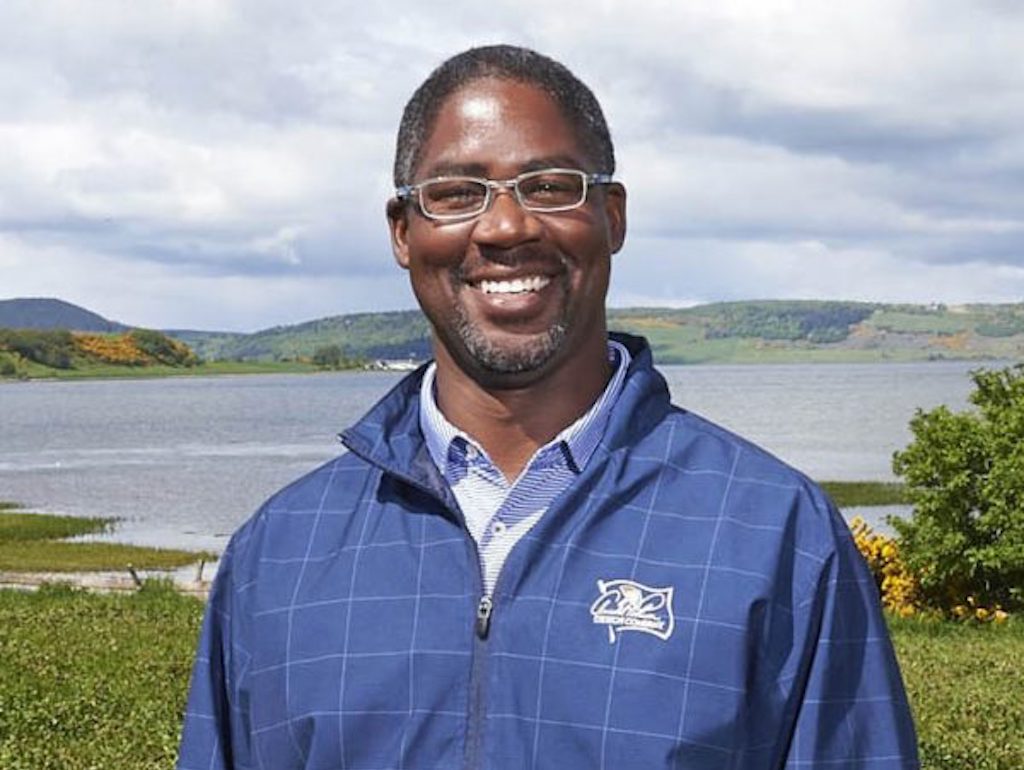
If you’ve followed my GolfWRX career arc, you know that I’m a fan of golf course architecture. I’ve had the opportunity to interview Bill Coore and Tom Doak, discuss course strategy with Scott Witter, Chris Wilczynski, Keith Rhebb and others. Each one is a unique talent, and has left a decided and positive mark on the game of golf on planet Earth. However, this is the first opportunity that I have had to interview a one-of-a-kind golf course architect. I won’t say any more about why he is one of a kind; you’ll soon figure it out. Brandon Johnson currently works in the employ of the Arnold Palmer Design Company. Without any delay, enjoy nine questions with Mr. Johnson.
1. Tell us a bit about yourself, and how golf came to be a part of your life.
BJ: I’m the son of an electrical engineer and school teacher, little brother to my sister, a devoted husband, a father of two wonderful kids, a special needs cat and someone who loves all kinds of good cuisine.
Music has always been a central part of my life. My dad played several instruments plus joined The Spiritual Renaissance Choir later in his life, my mom played the piano and has a beautiful voice, and my sister played the cello. My first desire was to play the saxophone like my Dad but when the saxophone section was full by registration time I decided to follow in my sister’s footsteps and play the cello.
The cello was my primary instrument as I played in organized orchestras from grade school through graduate studies and received a minor in music at NCSU along the way. My parents arranged piano lessons for several years, enjoyed the instrument and wish to this day I had continued. One reason had to be my fascination with the drums. During my 9th-10th grade years I began playing the drums and joined two local neighborhood garage bands. Fun times!! As an adult I’ve enjoyed my struggle to learn how to play the acoustic guitar.
Playing and competing in sports has always been a hobby. Before golf started to consume all my attention playing organized soccer, baseball, or pickup basketball with friends in the neighborhood kept me active.
Golf became my main focus when I was 12. One summer day my friend invited me to play. We went to the now extinct Sharon Golf Club, paid our three dollar greens fee and dribbled the ball on the hard pan fairways all day. My fascination, intrigue and love for the game grew instantly and I proceeded to fill my summers, weekends and time after school at the golf course.
2. At what point in your life did you determine that golf course architecture was more than an interest?
BJ: Shortly after taking up the game, I developed a strong interest in seeing and learning about different courses. Playing and trying to get better was still the primary focus, and would be for several more years, but the seed had been planted. Like a lot of kids who played, my childhood dream was to become a PGA Tour professional. I missed that and being a rock star drummer by a mile!
Sketching and drawing was a hobby growing up and I owe that introduction and inspiration to my older sister who is the true artistic talent in the family. My sketch subjects were objects and themes I found interesting. Soon those drawings of still life scenes, cars, pretend inventions and cartoon figures, turned into golf holes from the coffee table book “Golf Courses of the PGA Tour” that my parents gave me for Christmas. New golf hole ideas and routings soon followed.
By high school I began to contemplate college options, potential career paths and interesting majors to pursue. Right or wrong, I was counseled to take technical drafting instead of continuing art classes. While not the ideal foundation for an aspiring golf course architect, it confirmed my suspicion that engineering and building architecture was going to be too rigid for me. Drafting class wasn’t a total loss as it was helpful in learning how to draw and read technical plans but more importantly to visualize, in this case objects, in 3D.
My interest in art, nature, architecture and love of golf led me to blindly pursue a degree in Landscape Architecture as a way to become a golf course architect.
In retrospect, I was fortunate to even get into the NC State School of Design. NC State was the only Undergraduate program that incorporated an interview and portfolio of artwork as part of the admissions process. Little did I know, it was a competitive program and they were searching for artistic talent. I cobbled together my sketches from 7th and 8th-grade art class along with one of my sketch routing plans to round out my portfolio of technical drafting drawings. The jury must have seen my love for golf and the excitement in my face when explaining the details of my conceptual routing plan.
Attending NC State would prove to be a wonderful experience and career-defining decision.
3. As you moved toward a career in GCA and design, which architects inspired you?
BJ: In golf course architecture my initial inspiration was sparked from two very different eras, Pete Dye, and later Mike Stranz, being the ultimate modern architects, and Donald Ross coming from golf architectures early defining era.
Seeing the work of Pete Dye on PGA Tour telecasts, mainly TPC Sawgrass and Harbour Town growing up, sparked my interest in golf course design. I used to record the telecasts and replay the pros’ swings in slow motion, or pause certain positions, as a way to learn the golf swing and improve my game. When TPC Sawgrass or Harbour Town was on, I found myself looking at the architecture in the background of those still or slow motion images. What was so striking on the screen was radically different from the courses I had access to. I became hooked, even obsessed with the game, and the architecture that was influencing the shots required to play it. That spark of interest grew and led me to pursue golf course architecture as a career.
I came to know and appreciate the work of Donald Ross through one of his lessor known courses. He is credited with the front nine at Fort Mill Golf Club. (George Cobb designed the back nine) My friends and I first played Fort Mill during a practice round for a junior event named after my first golf pro Walter Renyolds. It was a fun and solid front nine with an efficient route over gentle terrain. Learning to tackle those slick, crowned, and tilted greens under tournament pressure was a daunting task! We used to play there several times during the summers and also venture out to Lancaster and Chester also credited to Ross.
The work of Mike Stranz has been a huge source of inspiration too. His work stands in a category of its own with how dramatic, fanciful, artistic and daring it is. The visual presentation of his bold sweeping forms, contours and horizon lines, in my opinion, are some of the most memorable “created” holes in golf. His work is more than just optics as they are a blast to play and full of contour, variety and strategic interest.
I first saw Tobacco Road the day after playing Pinehurst #2 for the first time. (Years before the Coore & Crenshaw restoration) The two experiences couldn’t have been more different. I’ve seen several more Stranz original works and look forward to seeing all of them one day soon.
Inspiration can and should be drawn from all kinds of sources. The study of nature and landforms helps to inspire the creation of contours and features that best emulate it. As a student studying Landscape Architecture I was drawn to historic landscapes, gardens and urban city centers. Invaluable design insight and inspiration was gained from personal experiences at all the major English, French, Italian and Spanish landscapes. Even golf architecture’s current natural, links or rugged design vs the manicured or parkland experience can be traced back to identical debates early practitioners had concerning the ideal or preferred English landscape or garden.
Non-golf and non-landscape architecture inspiration helps expand the mind too. The building architect Anton Gaudi is one of my favorites, artists like the Impressionists, Salvador Dali, M.C. Escher, and music from the Baroque Era to the present, in my opinion, are all excellent sources of material to study that sheds light on how other artists use a process, creatively solve problems, and break away from confining historic norms and traditions to push their craft forward and develop new interpretations of their art form.
There is a plethora of interesting golf architecture in the world, old and historic to new and modern. It is important to look back, study and draw inspiration from historic architecture to discover and learn about the architects and courses of the “Golden Age” but that should not be a binding principle. Exploring modern and contemporary golf architecture is equally as important, maybe even more important if golf is to find and develop new horizons.
It is essential to keep looking forward as the game continues to evolve. The “Golden Age” architects defined the architecture of their time, Pete Dye ushered in a new era appropriate for his time and our generation should continue to look forward to discover the appropriate architecture for tomorrow. At some level, it will always be inspired by or in reaction to its history but the players and technology of today are different from the players and technology from 100 years ago. Golf architecture needs to creatively bridge the two eras to progress and I look forward to the fun challenge of developing my unique interpretation.
4. Your first stop was as design coordinator for The First Tee. What did that position include and what projects resulted?
BJ: After completing two internships at the PGA Tour Design Services office and one as a member of the construction crew at TPC Deere Run the position at The First Tee became available. Even though the industry was buzzing no one seemed to be hiring. I knocked on a ton of architect’s doors, made phone calls and sent numerous resumes but never got an answer. This was my only viable professional option to get into golf architecture at the time.
The First Tee was still an unproven and undefined concept when I started but it had the full weight of the industry behind it. My initial role was to serve as a clearinghouse and primary point of contact for TFT Regional Directors, their emerging chapters and the golf industry. It was a wonderful opportunity for me to be housed out of the PGA Tour Design Services office, learn from their staff and process yet be somewhat independent on TFT projects. I traveled the entire country consulting with our chapters and the local officials they were partnering with, evaluating all kinds of potential sites, creating and evaluating budgets, project schedules and anything else associated with setting up projects. It evolved into a mountain of concept and construction plan production for all these different sites I was visiting. The effort and timeline required to getting a project from its inception to completion is arduous and long. Unfortunately, several really wonderful opportunities were never completed or moved forward after I left.
For 7 years I worked with TFT of Connecticut on multiple sites around Hartford, additional holes at existing courses, short courses, practice facilities, you name it. TFT Connecticut was connected to the PGA Tour event, TPC River Highlands and had plans for a statewide facility. Adjacent to the TPC River Highlands was an old quarry pit and field used for parking. We had some thoughtful and interesting plans to use that space for a facility that simultaneously fixed the inadequate practice facility at the club and other tournament set up issues as part of a joint partnership. Just as my time with TFT was ending the project was finally gaining momentum.
Coincidentally, they eventually completed the project with a former Palmer Design Associate that started with The Tour as I was departing. The driving range portion remained from my efforts but the configuration of the practice holes are different.
There is a similar story with TFT Chattanooga. I must have looked at six or seven sites and produced even more conceptual plans, budgets, schedules with them. We had an interesting brownfield site connected with a new community development project that would have included a wildly natural and fun 9-hole course and short game/short course and practice facility. I’ve always dreamt, even hoped, that one day I’d get a call that the project would move forward. It had the potential to be a model for how golf and great golf course architecture could be the catalyst for responsible environmental remediation, development and become a positive focal point for the community.
Milan Moore with PGA Tour Design completed the practice facility portion of the TFT Pueblo project that occupied a large portion of my time at TFT. I’m not sure if they ever completed the nine-hole course designed to accompany it.
There were tons of other interesting projects and odds and ends. A few projects of note did come to fruition. One larger project that I worked on was the Thunderbirds Golf Course, later renamed Vistal in Phoenix, Arizona. We completely redesigned an existing 18-hole course. Sadly, it no longer exists. The renovation of the municipal golf course El Rio Alvarez in Tucson, Arizona was another fun and successful project. Ken Kavanaugh and I worked together on revitalizing that local gem. I did some master planning and consulting for the City Courses in Shreveport, Louisiana and oversaw an extremely low budget greens project at Querbes. The additional master plan work on the other course(s) showed promise but they never materialized past the concept stage.
5. You made the move from TFT to Palmer Design. What compelled that decision?
BJ: Personally it was a very difficult decision to make because I really loved working for The First Tee, working with and learning from some of the most knowledgeable, passionate, and kind-hearted individuals I know who dedicated their lives to making golf a more accessible game.
We had a special group back then and I’m proud to have contributed to the cause. The bonus was developing so many wonderful friendships along the way, friendships that will last a lifetime.
The First Tee was growing rapidly and evolving in those early years. What was once a facility-based effort was now changing as the Life Skills programming was becoming the focus and backbone of the organization. Professionally, I had a once in a lifetime opportunity. One, to work for and directly with Arnold Palmer, a man I respected and admired and two, to grow as a designer/architect while also contributing to the company and its forward evolution by sharing my own thoughts, ideas and experiences. There are not too many opportunities in this industry so, when Thad Layton informed me the company was moving to Orlando from Ponte Vedra Beach, FL and there might be an opening, I knew I needed to investigate the opening door.
Oddly enough a lot of the tradition-breaking proposals and designs we are seeing today that receive so much praise and attention, short courses, alternate route configurations, non 9 or 18 configurations, duel use spaces between practice holes/short game areas/driving ranges, putting courses and proper forward tee options, were all ideas and concepts TFT and its chapters were advocating for in its facility-based models. We received some resistance to these ideas. Some didn’t think it was “real golf”, others could not find a way to make the operations and economics work. I’m glad to see the public and industry embrace them more today. We have some fun and exciting plans in the hopper that would add to the conversation when the projects more forward.
6. How long have you been with Palmer design, and to which projects have you contributed most?
BJ: I started in August of 2006 so it will be 14 years in just under a month. Below is a selected short list of projects:
-NCSU – Lonnie Poole Golf Course (my Alma mater…Go Pack!)
-Pure Scene – Kunming China
-Bay Hill Renovation (It was a team effort but Thad and I took the lead)
-Wexford Renovation
-Spring Island – Old Tabby Links Renovation
-PGA National – Palmer Course Renovation (2007 and 2018)
-Lakewood National (Commander and Piper Courses)
7. Which have been your favorite holes, or parts of holes, that hold your signature?
BJ: I’m glad you didn’t restrict me to just one favorite course, hole or feature! It’s nearly an impossible task to distill the canon of interesting architecture and features down to “one” favorite.
It is even challenging to compile a complete list of favorites as something you, or others, find worthy of inclusion will invariably be left out.
I recently wrote an article for the July 2020 issue of Golf Architecture Magazine about a select few of my “Favorite Features” that I’ve studied and experienced over the years. One or two of them might not be typical or obvious while others should have wide consensus.
Having a “signature” might not be accurate but there are strategic principles that form and guide my thinking and thoughts or ideas I enjoy discovering on properties or incorporating into holes. Below is a short sample:
-“Meaningful Width”
– Greens and green sites that use angle, contour and a variety of pin locations that influence tee shot and approach shot decision making
-Contending with obscured or blind approach shots. Especially when they are the consequence of avoiding challenging the ideal line due to a well-placed hazard or feature.
– Contours the feed, collect and shed the ball
Favorite Holes
#8 Wexford – It is one of the shorter Par 5 holes at Wexford. The majority of players should be able to get close to the green in two and those with slightly above average length should experience a high rate of success going for the green in two, especially when the course is playing firm and fast.
I’ve always been drawn to this hole for its simplicity and how subtle and nuanced the strategic requests are yet how important it is to recognize those clues, plan, and position shots accordingly or deal with the potentially disastrous ramifications of being out of position.
The foundation of my changes during the 2011 renovation were simple. Nudge the green slightly to the right, eliminate the large, flat fairway bunkers that only gobbled errant shots, and convert that space to fairway. These simple moves now incorporated an existing stand of tall pine trees found just beyond the landing area on the right and injected layers of strategy the previous version lacked.
A small singular bunker signifies the ideal line down the left side of the fairway. This opens up the best view and angle to challenge the three center line cross bunkers for your lay up or attempt to reach the green in two. Tee shots that drift too far right risk being partially blocked out by the trees or having to negotiate over hanging limbs to get back into position.
The small square shaped green, with an elevated front left pin nestled against a front left bunker is gently pitched going away from the player. A medium depth swale fronts the right portion of the green. A counter intuitive leave long will avoid tricky recovery situations and allow the player to use contour to their advantage. The same contour that defends the aggressive play in two or the deft pitch after a lay-up.
#12 Pure Scene
Working in China was fun, interesting, challenging and one of the most enlightening experiences in my professional career. There is a long back story to completing the course and this hole, one that I won’t expand upon here. After a frantic call from our client explaining how new government regulations would drastically change our routing during the middle of construction and that we needed to be on site in two days, we found this hole.
A short to mid length Par 3 with the beautiful Lake Dianchi in the background. I like how the back left pin location just dangles on the cliff edge.
#15 Pure Scene
Another hole with a long back story resulting from a different set of circumstances that forced us to depart from our original routing.
This short drivable par 4 has a massive and inviting fairway with a green at the final destination that ranks as one of the smallest I’ve ever built. (#9 at Wexford is another contender) The narrow sliver of green sits on the edge of the hill/cliff side with an infinity view to the country side beyond. The prevailing wind will play a factor here assisting tee shots down the right side for the better angle while also bringing the far cliff edge into play. Contours allow tee shots to drift farther off line long and/or left resulting in short, down prevailing wind pitches to a very narrow and shallow green. Long left approach and recovery shots to a back pin must navigate confounding contours. Bold and smart plays will lead to success here.
#11 Old Tabby Links
We altered this hole the most during our 2012 renovation of Spring Island – Old Tabby Links.
This hole provides the membership with variety and choice. We kept the left and right tee options but made sure they looked and played different. We retained the original yardages on the left tee complex and shortened/converted play from the right tee angle into a drivable Par 4. Width, centerline bunkers, obscured views from select angles, and pin locations that bring different contours or features into play depending on the angle of approach make this hole interesting and fun to play.
Favorite Features or parts of a hole
#4 NCSU – Lonnie Poole Golf Course – We found and utilized the natural ground contour as the main strategic feature of the hole. One can ride the ridge, past the left cross bunker onto the green with a well-placed shot or have that same ridge shed balls further left behind the bunker or right into a swale leaving a tricky angled pitch.
#5 NCSU – Lonnie Poole Golf Course – The combination of utilizing the bold, natural rolling terrain, protruding right tree line and extended fairway cut to the far right and left extremes creates, in my opinion, a fun tee shot where local knowledge is key. (The original fairway line extended farther right then the one they mow currently) One can be lulled to sleep here thinking there is gracious space at the landing area but favoring the left half with a well-positioned ball, or blowing it over and/or past the tree line if you’re long enough, are the best plays.
#5 Lakewood National-Commander Course (Back Right Pin and Green surround) – The main defending feature of the green and complex is the back right, thimble sized, dome with a devilish pin location on top. No bunkers guard this green, just the long pond down the left side of a fairway that is plenty generous for one to confidently avoid a watery disaster. A ridge tumbles down beyond a diagonal cross bunker on the right, approximately 85 yards out, providing a safe and effective way to avoid the lake while still accessing the green and front pin locations. The fun, challenge and decision making begins when that feeding ridge is over played and balls funnel down behind this back dome.
During the Korn Ferry Suncoast LECOM Classic a Feb 16, 2019 tweet on my account and Thad Layton’s, my design partner, shows the dilemma of being on the wrong side of this contour. What the video does not show is 1) His playing partner, who was in the exact same spot, successfully nestle his recovery next to the hole for a birdie. 2) The mental deliberation both players went through to try and figure out the best play.
Position is key as I’ve utilized this dome contour from a different angle to escape being out of position on the lake bank and feed a ball down to the back left pin next to the water.
8. Describe for us the perfect place to build a golf course.
BJ: First, I know some stunning sites in the U.S. and in different locations around the globe that we believe would be perfect or “ideal” ground for golf. They just need the right partners, organization and/or investments. As an architect always in search of ideal projects to devote all our time towards and channel our passion and creativity into, I’d be missing an opportunity if I didn’t float those opportunities into the universe!
The first instinctive thought, and where the majority of golf architecture might fall back on, are origins in wind swept, sandy dunescapes with wispy fescue and marram grasses blanketing rumpled and wrinkled terrain that’s been perfectly sculpted over decades by nature’s masterful touch. It is hard to find fault with this setting.
Adding a raucous ocean battering a shoreline of both rocky cliff edge and sandy dunes to anchor the site and serve a dual role as the ultimate hazard and sublime vista only makes it better.
Ideally, the accompanying landscape palette would be native yet unique. A palette so full and rich with variety that evolves across the site. The routing would take you on an exploratory journey of the sites highlight reel, incredible views overlooking the most majestic, distant and unspoiled landscapes, intimate and cozy outdoor rooms whose features almost engulf you and then burst into another stunning landscape.
There are other factors to consider though. Climate – my preference would be a location with majority days of sunshine, warm, but not too hot. Certainly not muggy or humid. Mild to cool mornings that warm up to comfortable temperatures where shorts or lose long pants are comfortable. (68F – 78F) Perhaps a bit of breeze that, depending on the season or global weather patterns, doesn’t produce a predictable prevailing wind.
Taking your question a little further into a dream scenario, a place where the summer solstice was the norm and not a one-day a year occurrence would be perfect! This would allow for the maximum number of rounds to be played. Players could structure days to take advantage of the daylight, play nine before the work day starts and nine or 18 in that wonderful glow of evening light.
The added bonus of no flies, mosquitos, no-see-ums or other tiny biting insects that cause distress would really make it perfect! Do you know such a place?
One of the reasons I believe golf is the ultimate game and chess match is that our field of play is constantly changing. Chess is a wonderful cerebral game filled with an infinite number of combinations and strategies, but the board and pieces remain the same. The natural ground upon which we play and compete in golf embodies so much variety and character. Ever changing weather conditions play a pivotal role in every golf round thus making the physical, mental and strategic requests that much more complex. Exceptional golf architecture, and how it interprets the varied ground upon which it rests, is a beautiful process and one that creates several versions of the “perfect” location. Inspired architecture on stunning foothill terrain with wildflower fields and snow-capped mountain backdrops on glacier formed contours (with cool water running over smooth pebbles in a creek bed) can be every bit has beautiful and captivating as architecture on a course intertwined in the rugged desert landscape or the traditional ideal seaside links course with massive dunes, marram grass and fescue waving in the breeze.
As an architect I love being inspired by the site and the challenge of finding and unlocking golf holes on that precious land and interpreting how ideal golf could be played over it in new fresh forms.
9. What question have we not asked, that you wish we had? Ask it and answer it, please.
BJ: A few years ago, Digital Links Magazine asked, “As an African-American, have you ever experienced any difficulties working in the golf industry?” An appropriate question three years ago and perhaps even more timely in today’s social and cultural climate. While I appreciated the question, and that someone generally cared about my experience, I also struggled with the question. It was a short answer interview format, this was the first time any writer or journalist asked me such a question, so I wrestled to answer this question that needed a more robust and contextualized conversation surrounding it.
I won’t expand upon that original answer here, nor ask another question, but I will use it has reference and context for a broader statement because the greater, more contextualized conversation goes far beyond my personal experiences.
“There were many pioneers in golf’s history who blazed trails, broke down cruel access barriers and endured tremendous hardships to play and enjoy the game they loved as equals to everyone in society. Golf owes them a huge debt of gratitude. Everyone has to overcome obstacles and blockades in life, I’ve had my fair share, but because of those heroic efforts my personal experience and exposure to the game was much different than theirs. I’m fortunate to have had so many generous people help, support, encourage and guide me from day one to the present. Any success I’ve experienced can be attributed to their helping hands.
While our society has evolved we must still recognize that we are not perfect and this wonderful game of golf that we love and are so passionate about, can and should, be more inclusive and representative of the world’s rich and diverse cultural, ethnic, racial and gender makeup.
I hope to help make this a reality.”
As you reached out to me to participate in this interview our nation, and eventually the greater international community, was engulfed in the raw, emotional reaction to the brutal and unnecessary death of George Floyd. The country was just beginning to tear off the final scabs of racial injustice and inequity wounds that have festered below the surface and plagued our countries history for too many generations.
This event sparked an unprecedented national conversation and collective grappling with our countries historical and current understanding of how race, racism and racial inequity continues to influence and shape every sector of our society. A modern realization that the racial, ethnic, cultural, religious and socio-economic divide still exists and is wider than most believed, experienced or cared to realize until now. This is a hard truth and reality to resolve but one we must all face in order to move forward, together, and forge a new history that will be unburdened by its past.
The game of golf is beautiful. The game of golf is elegant. The game of golf is a connector. Wonderful friendships and experiences that cross racial, ethnic and cultural lines are formed and nurtured through participation in the game. There is nothing wrong with the game of golf. Unfortunately, the history of golf and its governance, is as equally entangled with the racial inequity and injustices of its time as the rest of our nation.
Yes, golf and its governing bodies have eliminated the nonsensical segregation rules and clauses that once wrongfully guided our pure game. That was an obvious and easy first step but not one that crumbled the foundation behind those practices or eliminated the impacts that years of inequitable treatment caused. Unfortunately, the continued government, management, operation and economics that structure our great game continue to be tainted by its history of racial, ethnic, religious and gender exclusion practices whose remnants still remain embedded within despite recent efforts to change.
Golf needs to fully reconcile its history of racial exclusion and reluctance to evolve in a multi-cultural society. Only then can we fully understand how the residue of past laws, practices and social, cultural and economic biases continue to stifle meaningful forward progress. When this occurs golf will be freed to move forward and thrive like never before.
I encourage the greater golf community, public golf and private member participants, elite players to the long handicap, and industry leaders to the wider golf market to help transform this game we all claim to love so dearly, into a welcoming, inclusive, vibrant game that is rich with the diversity and talent of our world. A game and structuring industry that supports golf and leads society to be a better version of itself.
Is this too much to ask of a game? A sport? NO. Not a sport as beautiful as golf. Not a sport whose participants extol the virtues of sportsmanship, integrity, honesty and personal enforcement of competitive rules. It is not too much to ask of a sport that raises BILLIONS of charitable dollars for communities and causes around the globe. It is time for the collective golf community to demonstrate how, through sport and the life long bonds created from it, will play a vital role in eradicating systemic racism and lead change towards a peaceful, diverse and inclusive society.
- LIKE34
- LEGIT9
- WOW9
- LOL0
- IDHT1
- FLOP0
- OB0
- SHANK0
19th Hole
Vincenzi’s LIV Golf Singapore betting preview: Course specialist ready to thrive once again

After another strong showing in Australia, LIV Golf will head to Sentosa Golf Club in Singapore looking to build off of what was undoubtedly their best event to date.
Sentosa Golf Club sits on the southern tip of Singapore and is one of the most beautiful courses in the world. The course is more than just incredible scenically; it was also rated 55th in Golf Digest’s top-100 courses in 2022-2023 and has been consistently regarded as one of the best courses in Asia. Prior to being part of the LIV rotation, the course hosted the Singapore Open every year since 2005.
Sentosa Golf Club is a par 71 measuring 7,406 yards. The course will require precise ball striking and some length off the tee. It’s possible to go low due to the pristine conditions, but there are also plenty of hazards and difficult spots on the course that can bring double bogey into play in a hurry. The Bermudagrass greens are perfectly manicured, and the course has spent millions on the sub-air system to keep the greens rolling fast. I spoke to Asian Tour player, Travis Smyth, who described the greens as “the best [he’s] ever played.”
Davis Love III, who competed in a Singapore Open in 2019, also gushed over the condition of the golf course.
“I love the greens. They are fabulous,” the 21-time PGA Tour winner said.
Love III also spoke about other aspects of the golf course.
“The greens are great; the fairways are perfect. It is a wonderful course, and it’s tricky off the tee.”
“It’s a long golf course, and you get some long iron shots. It takes somebody hitting it great to hit every green even though they are big.”
As Love III said, the course can be difficult off the tee due to the length of the course and the trouble looming around every corner. It will take a terrific ball striking week to win at Sentosa Golf Club.
In his pre-tournament press conference last season, Phil Mickelson echoed many of the same sentiments.
“To play Sentosa effectively, you’re going to have a lot of shots from 160 to 210, a lot of full 6-, 7-, 8-iron shots, and you need to hit those really well and you need to drive the ball well.”
Golfers who excel from tee to green and can dial in their longer irons will have a massive advantage this week.
Stat Leaders at LIV Golf Adelaide:
Fairways Hit
1.) Louis Oosthuizen
2.) Anirban Lahiri
3.) Jon Rahm
4.) Brendan Steele
5.) Cameron Tringale
Greens in Regulation
1.) Brooks Koepka
2.) Brendan Steele
3.) Dean Burmester
4.) Cameron Tringale
5.) Anirban Lahiri
Birdies Made
1.) Brendan Steele
2.) Dean Burmester
3.) Thomas Pieters
4.) Patrick Reed
5.) Carlos Ortiz
LIV Golf Individual Standings:
1.) Joaquin Niemann
2.) Jon Rahm
3.) Dean Burmester
4.) Louis Oosthuizen
5.) Abraham Ancer
LIV Golf Team Standings:
1.) Crushers
2.) Legion XIII
3.) Torque
4.) Stinger GC
5.) Ripper GC
LIV Golf Singapore Picks
Sergio Garcia +3000 (DraftKings)
Sergio Garcia is no stranger to Sentosa Golf Club. The Spaniard won the Singapore Open in 2018 by five strokes and lost in a playoff at LIV Singapore last year to scorching hot Talor Gooch. Looking at the course setup, it’s no surprise that a player like Sergio has played incredible golf here. He’s long off the tee and is one of the better long iron players in the world when he’s in form. Garcia is also statistically a much better putter on Bermudagrass than he is on other putting surfaces. He’s putt extremely well on Sentosa’s incredibly pure green complexes.
This season, Garcia has two runner-up finishes, both of them being playoff losses. Both El Camaleon and Doral are courses he’s had success at in his career. The Spaniard is a player who plays well at his tracks, and Sentosa is one of them. I believe Sergio will get himself in the mix this week. Hopefully the third time is a charm in Singapore.
Paul Casey +3300 (FanDuel)
Paul Casey is in the midst of one of his best seasons in the five years or so. The results recently have been up and down, but he’s shown that when he’s on a golf course that suits his game, he’s amongst the contenders.
This season, Casey has finishes of T5 (LIV Las Vegas), T2 (LIV Hong Kong), and a 6th at the Singapore Classic on the DP World Tour. At his best, the Englishman is one of the best long iron players in the world, which makes him a strong fit for Sentosa. Despite being in poor form last season, he was able to fire a Sunday 63, which shows he can low here at the course.
It’s been three years since Casey has won a tournament (Omega Dubai Desert Classic in 2021), but he’s been one of the top players on LIV this season and I think he can get it done at some point this season.
Mito Pereira +5000 (Bet365)
Since Mito Pereira’s unfortunate demise at the 2022 PGA Championship, he’s been extremely inconsistent. However, over the past few months, the Chilean has played well on the International Series as well as his most recent LIV start. Mito finished 8th at LIV Adelaide, which was his best LIV finish this season.
Last year, Pereira finished 5th at LIV Singapore, shooting fantastic rounds of 67-66-66. It makes sense why Mito would like Sentosa, as preeminent ball strikers tend to rise to the challenge of the golf course. He’s a great long iron player who is long and straight off the tee.
Mito has some experience playing in Asia and is one of the most talented players on LIV who’s yet to get in the winner’s circle. I have questions about whether or not he can come through once in contention, but if he gets there, I’m happy to roll the dice.
Andy Ogletree +15000 (DraftKings)
Andy Ogletree is a player I expected to have a strong 2024 but struggled early in his first full season on LIV. After failing to crack the top-25 in any LIV event this year, the former U.S. Amateur champion finally figured things out, finished in a tie for 3rd at LIV Adelaide.
Ogletree should be incredible comfortable playing in Singapore. He won the International Series Qatar last year and finished T3 at the International Series Singapore. The 26-year-old was arguably the best player on the Asian Tour in 2023 and has been fantastic in the continent over the past 18 months.
If Ogletree has indeed found form, he looks to be an amazing value at triple-digit odds.
- LIKE3
- LEGIT3
- WOW1
- LOL2
- IDHT0
- FLOP2
- OB0
- SHANK0
Opinion & Analysis
Ryan: Lessons from the worst golf instructor in America

In Tampa, there is a golf course that boasts carts that do not work, a water range, and a group of players none of which have any chance to break 80. The course is overseen by a staff of crusty men who have succeeded at nothing in life but ending up at the worst-run course in America. However, this place is no failure. With several other local courses going out of business — and boasting outstanding greens — the place is booked full.
While I came for the great greens, I stayed to watch our resident instructor; a poor-tempered, method teacher who caters to the hopeless. At first, it was simply hilarious. However, after months of listening and watching, something clicked. I realized I had a front-row seat to the worst golf instructor in America.
Here are some of my key takeaways.
Method Teacher
It is widely accepted that there are three types of golf instructors: system teachers, non-system teachers, and method teachers. Method teachers prescribe the same antidote for each student based on a preamble which teachers can learn in a couple day certification.
Method teaching allows anyone to be certified. This process caters to the lowest caliber instructor, creating the illusion of competency. This empowers these underqualified instructors with the moniker of “certified” to prey on the innocent and uninformed.
The Cult of Stack and Jilt
The Stack and Tilt website proudly boasts, “A golfer swings his hands inward in the backswing as opposed to straight back to 1) create power, similar to a field goal kicker moving his leg in an arc and 2) to promote a swing that is in-to-out, which produces a draw (and eliminates a slice).”
Now, let me tell you something, there is this law of the universe which says “energy can either be created or destroyed,” so either these guys are defying physics or they have no idea what they are taking about. Further, the idea that the first move of the backswing determines impact is conjecture with a splash of utter fantasy.
These are the pontifications of a method — a set of prescriptions applied to everyone with the hope of some success through the placebo effect. It is one thing for a naive student to believe, for a golf instructor to drink and then dispel this Kool-Aid is malpractice.
Fooled by Randomness
In flipping a coin, or even a March Madness bet, there is a 50-50 chance of success. In golf, especially for new players, results are asymmetric. Simply put: Anything can happen. The problem is that when bad instructors work with high handicappers, each and every shot gets its own diagnosis and prescription. Soon the student is overwhelmed.
Now here’s the sinister thing: The overwhelming information is by design. In this case, the coach is not trying to make you better, they are trying to make you reliant on them for information. A quasi Stockholm syndrome of codependency.
Practice
One of the most important scientists of the 20th century was Ivan Pavlov. As you might recall, he found that animals, including humans, could be conditioned into biological responses. In golf, the idea of practice has made millions of hackers salivate that they are one lesson or practice session from “the secret.”
Sunk Cost
The idea for the worst golf instructor is to create control and dependency so that clients ignore the sunk cost of not getting better. Instead, they are held hostage by the idea that they are one lesson or tip away from unlocking their potential.
Cliches
Cliches have the effect of terminating thoughts. However, they are the weapon of choice for this instructor. Add some hyperbole and students actually get no information. As a result, these players couldn’t play golf. When they did, they had no real scheme. With no idea what they are doing, they would descend into a spiral of no idea what to do, bad results, lower confidence, and running back to the lesson tee from more cliches.
The fact is that poor instruction is about conditioning players to become reliant members of your cult. To take away autonomy. To use practice as a form of control. To sell more golf lessons not by making people better but through the guise that without the teacher, the student can never reach their full potential. All under the umbrella of being “certified” (in a 2-day course!) and a melee of cliches.
This of course is not just happening at my muni but is a systemic problem around the country and around the world, the consequences of which are giving people a great reason to stop playing golf. But hey, at least it’s selling a lot of golf balls…
- LIKE17
- LEGIT1
- WOW0
- LOL4
- IDHT1
- FLOP0
- OB0
- SHANK18
19th Hole
Vincenzi’s 2024 Zurich Classic of New Orleans betting preview

The PGA TOUR heads to New Orleans to play the 2023 Zurich Classic of New Orleans. In a welcome change from the usual stroke play, the Zurich Classic is a team event. On Thursday and Saturday, the teams play best ball, and on Friday and Sunday the teams play alternate shot.
TPC Louisiana is a par 72 that measures 7,425 yards. The course features some short par 4s and plenty of water and bunkers, which makes for a lot of exciting risk/reward scenarios for competitors. Pete Dye designed the course in 2004 specifically for the Zurich Classic, although the event didn’t make its debut until 2007 because of Hurricane Katrina.
Coming off of the Masters and a signature event in consecutive weeks, the field this week is a step down, and understandably so. Many of the world’s top players will be using this time to rest after a busy stretch.
However, there are some interesting teams this season with some stars making surprise appearances in the team event. Some notable teams include Patrick Cantlay and Xander Schauffele, Rory McIlroy and Shane Lowry, Collin Morikawa and Kurt Kitayama, Will Zalatoris and Sahith Theegala as well as a few Canadian teams, Nick Taylor and Adam Hadwin and Taylor Pendrith and Corey Conners.
Past Winners at TPC Louisiana
- 2023: Riley/Hardy (-30)
- 2022: Cantlay/Schauffele (-29)
- 2021: Leishman/Smith (-20)
- 2019: Palmer/Rahm (-26)
- 2018: Horschel/Piercy (-22)
- 2017: Blixt/Smith (-27)
2024 Zurich Classic of New Orleans Picks
Tom Hoge/Maverick McNealy +2500 (DraftKings)
Tom Hoge is coming off of a solid T18 finish at the RBC Heritage and finished T13 at last year’s Zurich Classic alongside Harris English.
This season, Hoge is having one of his best years on Tour in terms of Strokes Gained: Approach. In his last 24 rounds, the only player to top him on the category is Scottie Scheffler. Hoge has been solid on Pete Dye designs, ranking 28th in the field over his past 36 rounds.
McNealy is also having a solid season. He’s finished T6 at the Waste Management Phoenix Open and T9 at the PLAYERS Championship. He recently started working with world renowned swing coach, Butch Harmon, and its seemingly paid dividends in 2024.
Keith Mitchell/Joel Dahmen +4000 (DraftKings)
Keith Mitchell is having a fantastic season, finishing in the top-20 of five of his past seven starts on Tour. Most recently, Mitchell finished T14 at the Valero Texas Open and gained a whopping 6.0 strokes off the tee. He finished 6th at last year’s Zurich Classic.
Joel Dahmen is having a resurgent year and has been dialed in with his irons. He also has a T11 finish at the PLAYERS Championship at TPC Sawgrass which is another Pete Dye track. With Mitchell’s length and Dahmen’s ability to put it close with his short irons, the Mitchell/Dahmen combination will be dangerous this week.
Taylor Moore/Matt NeSmith +6500 (DraftKings)
Taylor Moore has quickly developed into one of the more consistent players on Tour. He’s finished in the top-20 in three of his past four starts, including a very impressive showing at The Masters, finishing T20. He’s also finished T4 at this event in consecutive seasons alongside Matt NeSmith.
NeSmith isn’t having a great 2024, but has seemed to elevate his game in this format. He finished T26 at Pete Dye’s TPC Sawgrass, which gives the 30-year-old something to build off of. NeSmith is also a great putter on Bermudagrass, which could help elevate Moore’s ball striking prowess.
- LIKE8
- LEGIT3
- WOW1
- LOL1
- IDHT0
- FLOP3
- OB1
- SHANK2
-

 19th Hole2 weeks ago
19th Hole2 weeks agoJustin Thomas on the equipment choice of Scottie Scheffler that he thinks is ‘weird’
-

 19th Hole2 weeks ago
19th Hole2 weeks ago‘Absolutely crazy’ – Major champ lays into Patrick Cantlay over his decision on final hole of RBC Heritage
-

 19th Hole3 weeks ago
19th Hole3 weeks agoTwo star names reportedly blanked Jon Rahm all week at the Masters
-

 19th Hole2 weeks ago
19th Hole2 weeks agoReport: LIV Golf identifies latest star name they hope to sign to breakaway tour
-

 19th Hole3 weeks ago
19th Hole3 weeks agoNeal Shipley presser ends in awkward fashion after reporter claims Tiger handed him note on 8th fairway
-

 19th Hole2 weeks ago
19th Hole2 weeks agoBrandel Chamblee has ‘no doubt’ who started the McIlroy/LIV rumor and why
-

 Equipment3 weeks ago
Equipment3 weeks agoWhat we know about Bryson DeChambeau’s 3D-printed Avoda irons
-

 19th Hole7 days ago
19th Hole7 days agoLET pro gives detailed financial breakdown of first week on tour…and the net result may shock you

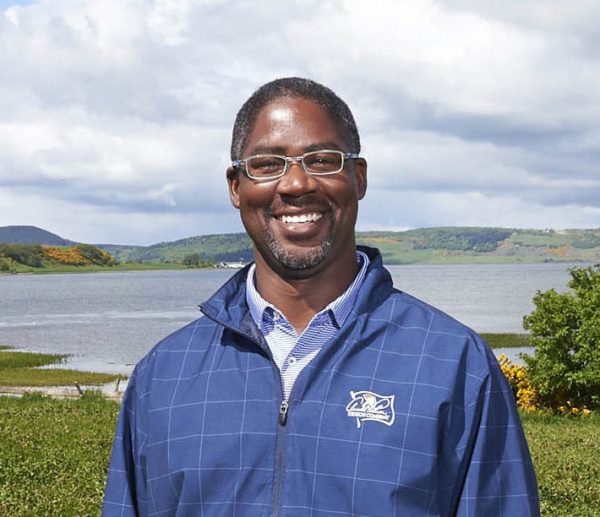

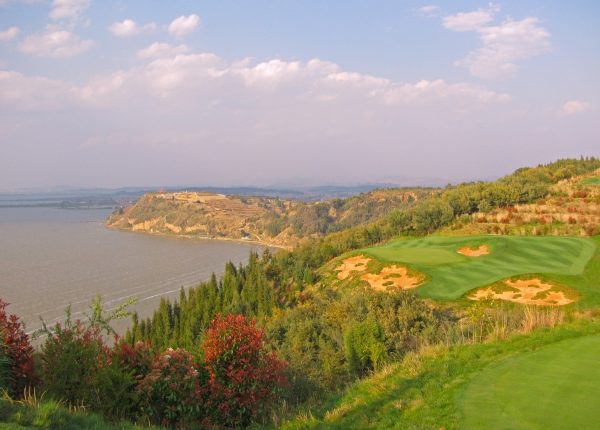
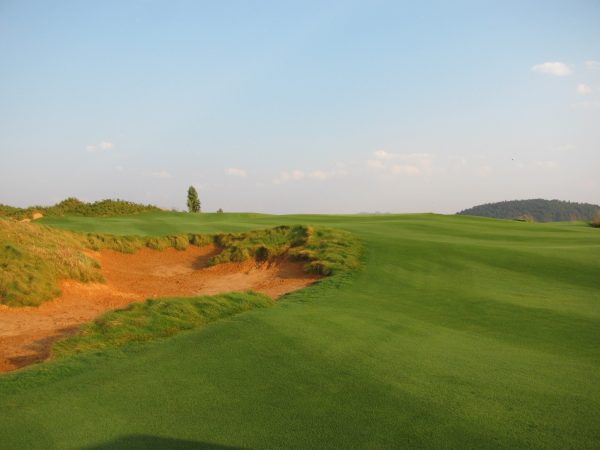
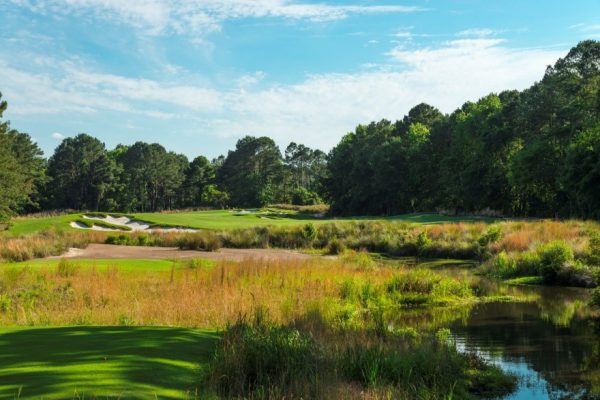
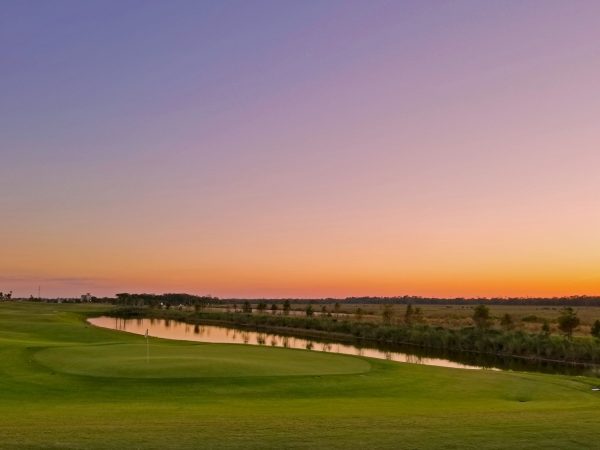
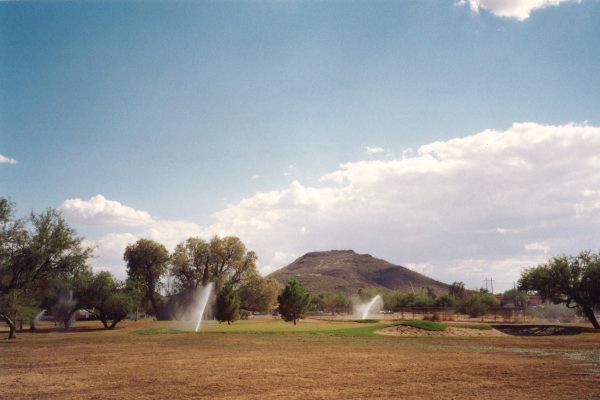
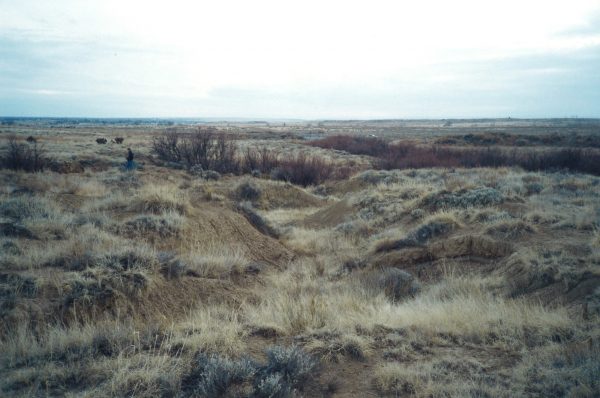
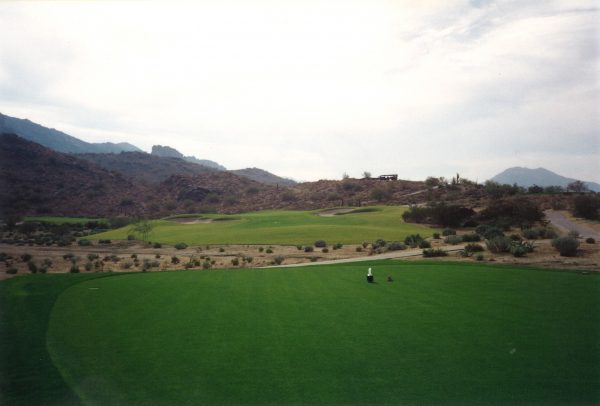


















CP
Jul 19, 2020 at 3:07 pm
Great interview! Johnson answers are so thoughtful and genuine. It would be nice to see pictures of each of the holes he talks about so we could see the features he mentions.